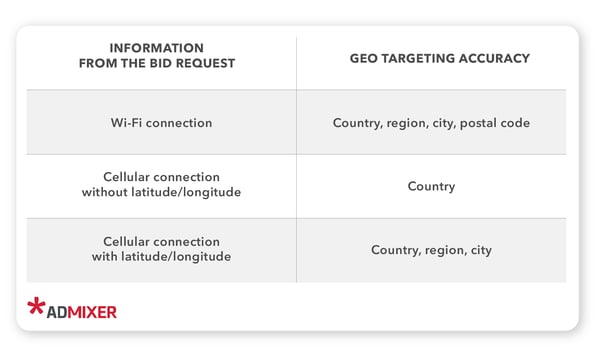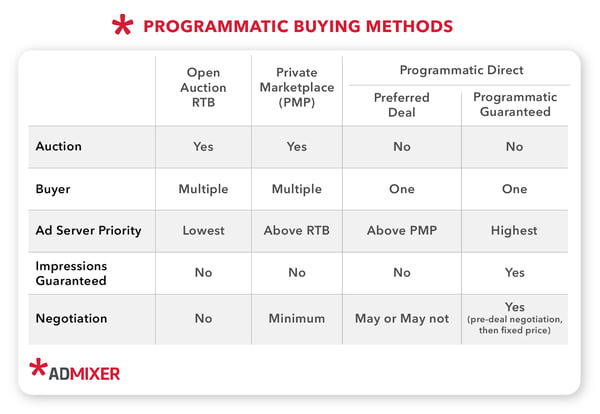October 2, 2025
 by Elena Storchak / October 2, 2025
by Elena Storchak / October 2, 2025

Programmatic advertising has revolutionized the way digital media is bought and sold, now accounting for the vast majority of global display ad spend.
As advertisers rely on automation to reach audiences with greater efficiency and precision, publishers are under increasing pressure to manage their ad inventory more effectively and profitably.
That’s where supply-side platforms (SSPs) come in.
A supply-side platform is a core piece of programmatic infrastructure that enables publishers, ranging from website owners to mobile app developers, to sell their ad space in real-time through automated auctions.
SSPs act as the publisher’s gateway to demand, connecting inventory to multiple advertisers, ad exchanges, and demand-side platforms (DSPs), all while optimizing pricing and protecting brand integrity.
This guide explores what SSPs are, how they function within the programmatic ecosystem, and why they’re essential for publishers seeking to maximize revenue, streamline operations, and remain competitive in a rapidly evolving digital landscape.
An SSP is a gateway for publishers to trade their advertising inventory programmatically across websites, games, or mobile apps through automated auctions.
The primary goal of an SSP is to provide timely reporting on campaign performance while maximizing the price of ad spaces for publishers.
Here are some key functionalities it offers:
As a critical component of the programmatic advertising ecosystem, an SSP enables publishers to auction off impressions to various buyers, facilitating real-time bidding and trading. It provides a unified interface for managing ad campaigns, reviewing campaign details, and controlling CPM (cost per thousand impressions). SSPs can integrate with demand-side platforms (DSPs), agency trading desks, ad networks, and ad exchanges, allowing for seamless trading across multiple demand partners.
Once publishers set up SSP ad tags on their pages, media buying occurs automatically through real-time auctions or other programmatic methods. The SSP streamlines this process by reviewing ad requests, matching them with relevant inventory, and conducting instant negotiations.
Although inventory trading is fully automated, SSPs offer mechanisms to protect publishers from unfavorable deals. They allow publishers to establish a price floor, ensuring that auctions do not fall below a specified minimum price.
Additionally, SSPs prioritize brand safety and reputation management. They filter out spam and inappropriate ads, helping publishers maintain a loyal audience. For example, a publisher can create whitelists and blacklists to restrict specific advertisers, such as preventing tobacco and alcohol companies from displaying ads on child-oriented websites.
In the programmatic advertising ecosystem, demand-side platforms (DSPs) and supply-side platforms (SSPs) play opposite but complementary roles. Together, they automate the buying and selling of digital ads in real-time, connecting advertisers seeking audiences with publishers offering premium inventory.
A demand-side platform (DSP) is a technology that enables advertisers, brands, and agencies to buy digital ad inventory automatically from multiple publishers.
Instead of manually negotiating deals, advertisers use a DSP to:
Simply put, a DSP helps advertisers reach the right users at the right time and price, across display, mobile, video, CTV, and more.e.
| Aspect | DSP | SSP |
| Main Users | Advertisers, agencies, brands | Publishers, media owners |
| Primary Goal | Buy ad inventory efficiently to reach target audiences | Sell ad inventory effectively to maximize revenue |
| Data Focus | Audience and campaign performance | Inventory and yield optimization |
| Process | Bids on impressions that meet targeting parameters | Offers impressions to multiple buyers through auctions |
| Control | Advertisers control bids, budget, and targeting | Publishers control pricing floors and buyer access |
While DSPs cater to advertisers, SSPs serve the publisher’s side of the transaction. Here’s how the interaction typically unfolds in milliseconds:

Supply-side platforms (SSPs) offer a range of features designed to help publishers optimize their advertising strategies and maximize revenue
SSPs support various advertising formats. When you contract an SSP, you can be confident that its publishers adhere to a single ad-serving protocol, and consequently, you won't need additional adjustments to serve ad creatives.
SSPs work in various media environments: web, in-app, in-game, CTV, and DOOH. In each environment, SSPs support various ad formats: display ads, banner ads, native ads, playable, push, and video ads.
Some SSPs specialize in web advertising, mobile, and desktop traffic, and others operate exclusively in the OTT/CTV sector. However, most SSPs are trying to grasp more niche markets and reach as many environments and formats as possible.
SSPs are optimized in real time based on extensive publisher data. This allows marketers and advertisers to target individual impressions instead of buying blocks of advertising. The action model promotes transparency in the digital marketplace, enabling advertisers to determine the actual market value of ad placements.
Auctioning may drive up the price of specific placements, but in the long run, it is a more cost-effective strategy for advertisers than direct media buys.
SSPs provide advertisers with information-rich geolocation data. The precision depends on the type of device and its connection to the network. Desktop devices with fixed internet access can provide internet protocol (IP) information for geotargeting, although it is rarely accurate beyond the country level.
Geotargeting for mobile devices is distinct from targeting desktop impressions. Mobile devices can connect to the web in several different ways:

SSPs structure data from publishers to offer better targeting options for advertisers. Publishers track customers' habits and preferences and can offer highly contextualized impressions paired with behavioral data. For example, if a user surfs websites about open-ocean fishing, the SSP will categorize those impressions and suggest them to local fishing rod dealers.
Advertisers can set up a more cost-effective campaign by utilizing highly targeted inventory that includes location-based and contextually relevant impressions. There is a difference between targeting a person in a specific region and targeting fishing enthusiasts who frequently visit the local pond in that region.
Those impressions will cost more since they incorporate the provider’s fees for data collection and management. Such data services are generally provided by data management platforms (DMPs). SSPs partner with DMPs to better segment audiences, analyze traffic, and supply impressions with more precise data. The additional costs vary depending on the provider.
SSP will appraise those impressions higher, but the advertiser can get a better reach and impact of their ads, and ultimately a higher return on investment.
SSP adds another data dimension to offered impressions by supplying them with the exact location and context, as well as defining buyer personas. Combining demographic data, such as gender, education, and income level, with nuances of user behavior allows advertisers to determine potential clients' affinities and intents.
SSPs enhance offered impressions with contextual information on audience habits, movements, and preferences, allowing advertisers to understand the mindset of potential clients. Advertisers can better manage their campaigns and tailor their ads to specific segments of their audience.
For instance, if the user visits a web page of jewelry stores or high-end clothing shops and has an income of over $150k+ per year, the SSP will categorize this user as a luxury shopper and place them in the corresponding segment. SSP then offers this highly desirable segment to advertisers who sell products in this price range.
SSPs usually increase CPM for these kinds of profiles, but advertisers know who is behind an impression and its real value.
Collecting data on the user's behavior is becoming a sensitive topic. A surge in privacy legislation, such as GDPR and the CCPA, constrains the use of tracking cookies for targeting and personalizing ads. Advertisers are still working on a solution for a more sustainable and confidential data collection model. Despite this, SSP has a couple of perks that can mitigate this problem.
SSPs can create anonymous personas using publishers' data without ever requiring personally identifiable information (PII). Publishers don't need to give away personal and confidential information to increase the yield from their inventory. Instead, publishers build anonymous contextual personas based on the user's activities. It combines demographic data with a breakdown of movements and daily activities, all while respecting a consumer's privacy.
A persona does not have a customer's PII; instead, it tells more about the character and intentions of the website visitor. Personas enable the SSP to convey a lot of information about the audience to prospective buyers while keeping users anonymous and protecting their privacy.
Google's decision to phase out third-party cookies has caused significant disruptions for advertisers and publishers. Website owners who traded their ad space with the assistance of third-party cookies now have to reconsider their data collection model.
For many mid-size publishers, which don't rely on registration for user data, the resurgence of contextual targeting will be the way out. Instead of tracking users' behavior, this model analyzes the content and intent of the web page and serves the most fitting ad. This targeting approach works best if the publishers use programmatic platforms from the same end-to-end ecosystem.
Understanding the key advantages of SSPs can help publishers make informed decisions that enhance their monetization strategies. Below are the top five benefits of using SSPs for publishers.
SSP services are a crowded marketplace of companies hustling to stand out and prove their value. Publishers want to work with SSPs that partner with numerous demand partners and can help them make better decisions by sharing insights and timely reporting campaign results.
Here are the aspects publishers value the most when choosing an SSP:

Through an SSP, a publisher can establish a priority and sell some of the inventory directly, reserve some for the closed marketplace of selected advertisers, and auction off the rest through real-time bidding.

This method resembles direct media buys between the publisher and advertiser. The parties agree on the number of impressions and the price. Those impressions are reserved and guaranteed to a particular advertiser and not offered anywhere else. The negotiations occur automatically through an API.
A preferred deal is a method of setting up primary advertising partners. The publishers first offer their inventory to the selected advertisers at a pre-negotiated price. However, a particular number of impressions is not guaranteed. If advertisers skip the chance to purchase those impressions, they are then transferred further to a private marketplace (PMP).
Preferred deals provide publishers with great convenience: they can sell inventory directly to high-paying clients, with the option to sell it via other methods if the inventory remains unused.
A private marketplace, or PMP, is an invitation-only trading platform for selected advertisers. It is frequently used by big publishers and media holdings with premium segments in their inventory. Instead of parading their inventory on the market, they sell it to a close circle of advertisers, such as luxury brands.
Ad space is bought and sold through a closed real-time auction with an exclusive number of participants. The advertiser's DSP connects directly to the SSP in the private marketplace.
Open auctions/ Real-time bidding (RTB) is the broad term that sometimes includes open RTB and Header bidding and may encompass various selling methods.
At its core, real-time bidding is a way of trading advertising spaces through individual impressions through the real-time auction. The process of selling and buying occurs in the browser, server, or ad exchange that connects to publishers through an SSP and to advertisers through a DSP.
Transactions occur instantly within milliseconds while the web page is loading. Real-time bidding is usually an open marketplace where everybody can join without particular restrictions. Nevertheless, three distinct models define the sales dynamic: OpenRTB, header bidding, and a hybrid model.
OpenRTB uses the waterfalling or daisy-chaining method, sequentially selling the publishers' inventory and requesting one demand source at a time. Publishers run a succession of real-time auctions until all of their ad inventory is bought. Publishers then offer the inventory sequentially to the demand partners in the established order, according to their historical yield.
OpenRTB operates via the second-price auction model. The winning bidder pays the price offered by the second-highest bidder plus $0.01.
Header bidding is another auction model that is gaining mainstream adoption in the industry. In header bidding, ad exchanges can bid simultaneously for the highest priority in the ad server instead of holding a separate auction for each demand partner. Header bidding uses the plain and simple first-price auction model. Not all SSPs offer header-bidding functionality.
Header bidding is becoming a new standard in the industry, while openRTB remains a practical strategy for publishers who want to prioritize a specific pool of advertisers.
There is also a hybrid model that combines features of header bidding and open RTB to deliver the maximum value of each impression. The server conducts the openRTB second-price auction and then goes on to a header bidding first-price auction. The winning bids compete in an additional auction determining the best price offer. The hybrid model increases the chances of getting higher bids and amplifies monetization.
The best way to streamline ad sales and optimize inventory is to use an advanced supply-side platform that incorporates the latest programmatic techniques.
Your choice of SSP depends on your specific needs and how you plan to manage and monetize your ad space.
There are several factors to consider when selecting the right SSP but to be included in this category, the platform must:
*Below are the top 5 leading supply-side platforms from G2’s Fall 2025 Grid® Report. Some reviews may be edited for clarity.
Google Ad Manager is a comprehensive management platform designed for publishers to efficiently manage their spaces. With features like real-time bidding, advanced targeting, and inventory control, Google AdManager helps maximize ad revenue while ensuring a smooth experience for both advertisers and users.
"We use this platform daily to run numerous Google ad campaigns for different keywords and products in our eCommerce business. We allocate 30% of our advertising budget to it, and it’s a great tool if you have searchable keywords. Compared to other advertising platforms, we get the best return on investment from this one. The platform also makes it easy to track clicks, cost per click, conversions, and more."
- Google Ad Manager Review, Brittaney F.
"There are some things I don’t like about Google Ad Manager, such as its difficulty in integrating with other tools. As we use it more frequently, we find that integration becomes challenging, and we often have to use alternative methods to connect with other tools."
- Google Ad Manager Review, Vikas P.
33Across is a supply-side platform focused on maximizing ad revenue through high viewability and engagement. It offers real-time bidding and advanced ad formats like video and display, and supports cross-platform monetization across desktop, mobile, and tablet. Its emphasis on quality ad placements helps publishers optimize their inventory and connect with programmatic demand.
"User privacy is central to 33Across because they do not save or store cookies, which builds customer confidence in using their application. Another unique feature is the ability to receive automatic advertisements for their products."
- 33Across Review, Mitali P.
"It can be tricky at first to understand this new way of accessing the internet, especially since many people are unfamiliar with it. It doesn’t save cookies, and we need to figure out how to make the most of this approach. I believe the marketing of this product should focus on privacy, as it is a major concern for many people today. They worry about how their data is shared and sold by large companies. I firmly believe this is the way forward, but a lot more needs to be done to expand it."
- 33Across Review, Shivam S.
GaleForceMedia media buying software is a web-based software platform designed to streamline media processes. It helps media buyers eliminate redundancies, such as duplicate field requirements, flexibly manage buys of different media types, accurately measure ad performance, and effortlessly reconcile invoices.
"It has been a great tool for our organization. The company is very responsive and works to improve the tool based on our suggestions. One of the unique features is that you can combine broadcast and cable to get one reach and frequency. The tool is user-friendly, and the overall experience has been worth using the platform."
- GaleForceMedia Review, Kritika A.
"While Gale Force Media is a strong platform overall, there are a few areas where I think improvements could make it even better. For example, the interface, though functional, could be more modern and intuitive in certain modules, especially for new users. Occasionally, the reporting tools feel a bit rigid, and more customization options would help tailor outputs to different client needs."
- GaleForceMedia Review, Kendal P.
Sharethrough is an SSP that specializes in native advertising. It delivers ads that integrate seamlessly with publisher content, enhancing to user experience. It offers RTB, cross-device support, and a focus on sustainable advertising. Sharethrough’s approach helps publishers drive better engagement and revenue with nonintrusive, content-aligned ad formats.
"There are new advertising methods, like dynamic captioned videos and QR codes for connected TV (CTV). These seamless integrations are easy to activate and are unique features from a premium supply-side platform (SSP). Plus, they have the best representatives in the industry!"
- Sharethrough Review, Zachary J.
"The reporting can be time-consuming to navigate and edit, requiring scheduled reports. It would be helpful to view reports within the user interface and have the option to export them to CSV."
-Sharethrough Review, Tambra N.
OpenX’s vision is to unleash the full economic potential of digital media companies through superior advertising technology, empowering publishers to maximize revenue, improve transparency, and build sustainable long-term growth across every channel.
"My clients are constantly asking for reporting, they want to know how many clicks their ads got, what percentage of people clicked on them, how many people saw the ads, etc, and this tool helps us track those numbers accurately and easily."
- OpenX Review, Cassidy E.
"There is less transparency in site-specific metrics here, and optimization options by site are limited. If we were able to optimize on certain site-level data, that would be helpful. There is limited scale for video within premium environments."
- OpenX Review, Sarah S.
Not always, but many of the best SSPs set minimum traffic or impression thresholds to ensure there’s enough scale for real‑time bidding and yield optimization.
Yes, but migrating to a new SSP usually requires retagging or updating your ad‑server code, reviewing demand partner integrations, and resetting yield control rules.
Quite a bit. You can typically set minimum price floors, restrict certain ad formats, manage whitelists/blacklists, control which demand sources participate, and enforce brand safety filters.
Not a guarantee, but it greatly improves your chances. SSPs amplify competition for your impression inventory, provide broader access to demand, and automate pricing/yield functions. Results depend on your traffic quality, ad placement, format mix, and how well you optimise.
Many SSPs now support contextual targeting, anonymous persona creation, and alternative identifiers, instead of relying purely on third-party cookies. They do this to comply with privacy legislation and shifting browser policies.
It can, especially if ad tags and demand partners aren’t optimized. Good SSPs mitigate latency through header-bidding setups, server-side integrations, and efficient ad-serving logic. Publishers still need to monitor page performance and partner integrations.
The widespread adoption of SSPs by publishers improves the quality of publisher-advertiser deals and enhances accountability in these relationships.
Similar to what DSPs do for advertisers, SSPs automate the redundant manual procedures prone to human error and streamline the ad-buying process for publishers. Publishers don't have to negotiate directly with the salesperson and collect manual insertion orders. Instead, they leave the advertising to a pre-configured automated platform.
SSPs offer superior user analysis, data profiling, audience management, and segmentation options. Through SSPs, publishers can provide more detailed insights into their audience, enabling advertisers to target their ad campaigns to the most suitable viewers precisely.
Discover publisher ad servers that can optimize your ad inventory, enhance performance, and maximize revenue.
This article was originally published in 2020. It has been updated with new information.
Elena Storchak is the Director of Supply Partnerships at Admixer. She is a seasoned AdTech professional with 7+ years of experience in marketing and advertising. Her expertise encompasses data, programmatic technologies, and publisher development.
Ad exchanges are primarily brokers for media trading on the open web.
 by Yaroslav Kholod
by Yaroslav Kholod
Most successful companies reach out to their audience through targeted online advertising.
 by Oleg Sokolan
by Oleg Sokolan
You already know the stakes: fragmented media buying, wasted ad spend, and opaque reporting...
.png) by Tanuja Bahirat
by Tanuja Bahirat
Ad exchanges are primarily brokers for media trading on the open web.
 by Yaroslav Kholod
by Yaroslav Kholod
Most successful companies reach out to their audience through targeted online advertising.
 by Oleg Sokolan
by Oleg Sokolan


